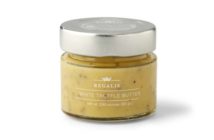
Mooove over, Holsteins. PETA wants world-famous Ben & Jerry’s Homemade Ice Cream to tap nursing moms, rather than cows, for the milk used in its ice cream.
People for the Ethical Treatment of Animals is asking the ice cream maker to begin using breast milk in its products instead of cow’s milk, saying it would reduce the suffering of cows and calves and give ice cream lovers a healthier product.
The idea got a cool reception Thursday from Ben & Jerry’s officials, the company’s customers and even La Leche League International, the world’s oldest breast-feeding support organization, which promotes the practice — for babies, anyway.
PETA wrote a letter to company founders Ben Cohen and Jerry Greenfield on Tuesday, telling them cow’s milk is hazardous and that milking them is cruel.
“If Ben and Jerry’s replaced the cow’s milk in its ice cream with breast milk, your customers — and cows — would reap the benefits,” wrote Tracy Reiman, executive vice president of the animal rights advocacy group. She said dairy products have been linked to juvenile diabetes, allergies and obesity.
Ashley Byrne, a campaign coordinator for PETA, acknowledged the implausibility of substituting breast milk for cow’s milk, but said it’s no stranger than humans consuming the milk of another species.
“We’re aware this idea is somewhat absurd, and that putting it into practice is a stretch. At the time same, it’s pretty absurd for us to be drinking the milk of cows,” she said.
It takes about 12 pounds — or 1 1/2 gallons of milk — to make a gallon of ice cream. Ben & Jerry’s, which gets its milk exclusively from Vermont cows, won’t say how much milk it uses or how much ice cream it sells.
As a standardized product under federal regulations, ice cream must be made with milk from healthy cows. Ice cream made from goat’s milk, for example, would have to be labeled as such.
Presumably, so would mother’s milk ice cream.
To Ben & Jerry’s, the idea is udderly ridiculous.

“We applaud PETA’s novel approach to bringing attention to an issue, but we believe a mother’s milk is best used for her child,” spokesman Sean Greenwood said in an e-mail. He didn’t respond to requests for an interview.
Leon Berthiaume, general manager of the St. Albans Cooperative Creamery, which provides milk products to Ben & Jerry’s, called the dairy products “among the safest in the world.”
“Milk from cows has long-term health benefits and has been proven to be safe and healthy and an important part of the American diet for generations,” he said. “I’m not ready to make that change.”
Cow’s milk and mother’s milk aren’t interchangeable, according to La Leche spokeswoman Jane Crouse, who says breast milk is a dynamic substance that’s different with each woman and each child and might have difficulty being processed into ice cream.
Then there’s the question of who would provide the milk, and whether they’d be paid.
“Some women feel compelled to donate milk to a milk bank for adopted babies, or for someone who’s ill or unable to breast feed. There’s plenty of anecdotal evidence about sisters who nurse each others’ babies. There’s a population of women very willing to share their milk. Whether there’s enough to do it for a commercial entity, who can say?” she said.
At the Ben & Jerry’s factory in Waterbury, consumers gave a collective “Ewww” to the idea Thursday.
“It’s kind of creepy,” said Jeff Waugh, 42, of Dayton, Ohio.
“I think it’s a little nutty,” said the Rev. Roger Wooton, 83, of Malden, Mass., finishing up a cup of Heath Bar Crunch.
“How would they get all that milk?” said his wife, Jane Wooton, 77.
Jen Wahlbrink, 34, of Phoenix, who breast-fed her 11-month-old son, Cameron, said she wouldn’t touch ice cream made from mother’s milk. She remembers her nursing days — and not that fondly.
“The (breast) pumps just weren’t that much fun. You really do feel like a cow,” she said, cradling her son in her hands.



